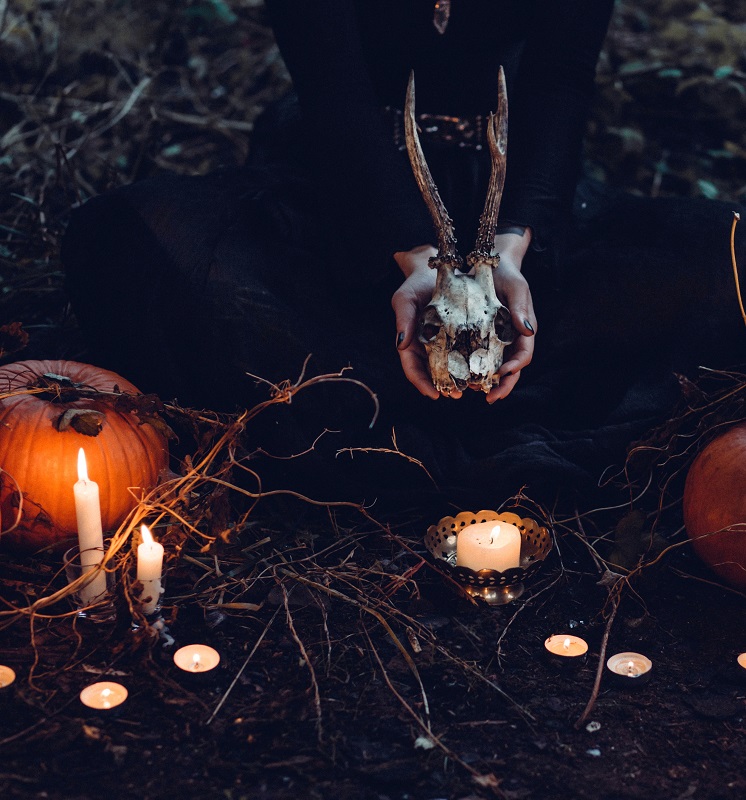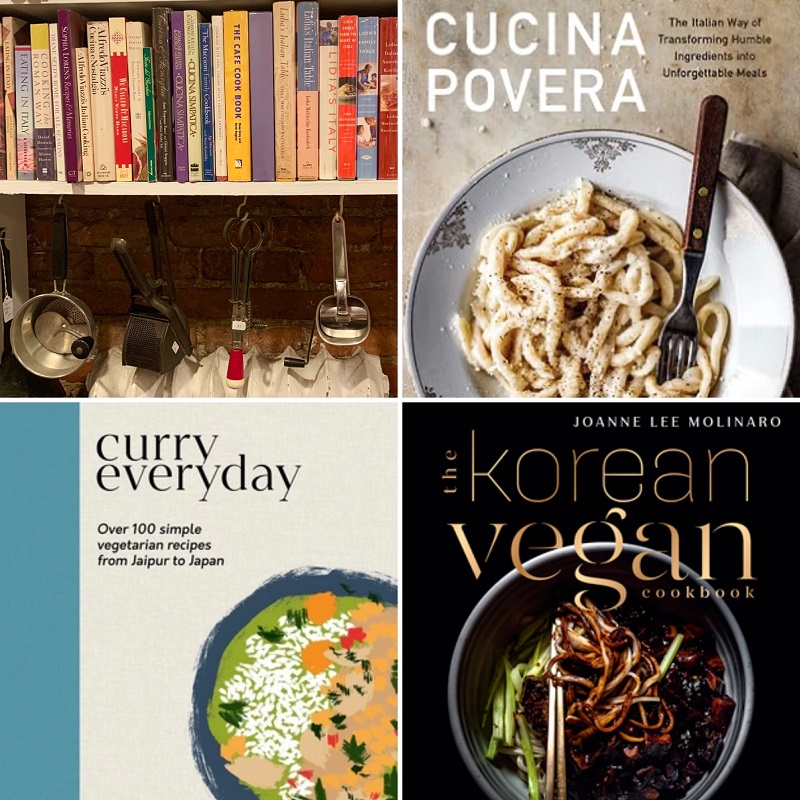Traditions, Rituals and Connection Around a Dinner Table
A Long and Deliciously Winding Road
A week or so before Christmas, I was greeted with a copy of Faith Kramer’s new cookbook, 52 Shabbats: Friday Night Dinners Inspired by a Global Jewish Kitchen that arrived in my mailbox from the Collective Book Studio, Faith’s publisher. The bright blue cover filled with a variety of delectable dishes immediately intrigued me, so I opened the book and stepped into a world filled with an abundance of global flavours that I’ve never seen before. Organized by seasons with an introduction on flavours and ingredients, 52 Shabbats also includes bits of the history of Jewish cuisine along with “make this Shabbat,” suggestions for a complete meal using other recipes within the book, along with troubleshooting tips and delectable photos, which I love. It’s a fantastic amalgam of flavour and history, all centered around Friday night dinners, or Shabbat.
Faith’s path towards writing and cooking is a diverse path that began with a childhood love for food and cultures that drove her to start a food blog. Eventually, it turned into a column for j., the Jewish News of Northern California, where she’s written a food column for over twelve years, to now, her first book, a beautiful collection of recipes that brings global flavours to your kitchen.
“Every recipe has a story,” Faith tells me in a recent conversation. “Sometimes it’s the little things…sometimes it’s bigger concepts like the symbolism of food in the Jewish religion.” For Faith, 52 Shabbats is more than just a cookbook. It’s also a memoir and a tribute to a life filled with knowledge and experience cooking the flavours of the world, one that begins in the Jewish diaspora.
I love the fact that Faith’s personality shines through the book as much as it did our recent conversation. By talking to her, I learned about the two women who inspired Faith’s culinary journey–her grandmother, whom she dubbed a “terrible cook,” but who instilled in her a love for Shabbat and Jewish holidays, and her mother, a fearless cook who grew her own vegetables and inspired her to explore a variety of cuisines. Overall, Faith is just as fantastic on the phone as she was on the page. Her excitement when talking about her book matched the level of excitement I got from receiving her book in the mail. Below, she shares with us one of her favourite “comfort” recipes, chicken plov, and her journey towards becoming an author.
Here’s what Faith had to share with us:
Tell us a bit about your journey to becoming an author. Was this the career you always knew you wanted?
Well, I’ve always wanted to be an author. When I was young, we used to get a newspaper daily, and I’d see women’s names in the bylines, and I thought, “I could do this!” So I did some journalism work for a while and later marketing, but I was always interested in food. I was inspired most by my grandmother, who was a terrible cook but who instilled in me a sense of exploration for other cuisines, while my mother was a fearless cook who grew her own vegetables and taught me all about technique and approaches to cooking. Later, when my youngest child was in high school, I found myself with more time on my hands. So I started a blog. I wrote about international food which later grew into writing about Jewish food. Then it evolved when an editor from j. the Jewish News of Northern California, a local publication in my home state, asked if I wanted to write a column for them. Of course, I said yes! Many of my close friends and family, including my husband Gary, told me that I should write a book. I thought about it for a while, and came up with the name “52 Shabbats.” But it wasn’t until two years ago that I met my publisher – the Collective Book Studio in Oakland, and I met my agent as well. By the time I sat down to write the book, I had a lot of ideas and recipes that I’ve honed over the years of writing and cooking food from the Jewish diaspora.
What’s the best advice you’ve ever been given, with regards to careers and success?
I’ve gotten a lot of advice over the years, so it’s hard to pick just one. But one in particular I’ve always remembered came from Dianne Jacob, who is a well known food writer, author and a teacher (I took a few of her classes) who said that you need to be true to your own voice. Build the vision that you see for yourself. People are drawn to experiences, so just because someone else has covered a topic doesn’t mean that you can’t do it yourself. Your views are unique; you just have to find a way to present it.
What books are on your reading list right now?
I just got a cookbook called Bene Appetit: The Cuisine of Indian Jews by Esther David. I’m also reading My Shanghai: Recipes and Stories from a City on the Water by Betty Liu. Both are delectable cookbooks. Those are just for me only. My husband and I are working our way through The 1619 Project together. Currently, we’re taking turns with the book.
When you’re writing – where do you write? What is the setting?
When COVID began, I had a laptop and several file boxes of information and it was all scattered around my dining room table. Not a great environment for writing. So my husband and I decided to convert our guest room into a working office for me. I feel so fortunate now. It’s such a privilege to be able to close your door and spread everything out!
Since we haven’t really had too many guests due to COVID, I think this room is working out quite well for me. I have a printer, a laptop, and everything I need. Plus, I also have a nice view of a camellia bush outside my window, and that makes me smile.
How have you been staying connected to your friends/family/community during COVID-19?
I live in the Bay Area, so it’s been really nice here, weather-wise. I feel lucky that we were able to have our Thanksgiving outdoors. The tables were spread six feet apart, of course, but still. Most of my connections have been through Zoom, as it is for many of us. I have a book group that meets once a month, so I get to check in with them. My synagogue also does weekly check-ins. Another thing that’s really helped me stay connected during this time is finding an online group hosted by Jamie Schler and Marissa Rothkopf. They’re both food writers and they have large followings on Twitter and each has their own podcast. Anyway, I’ve met some really wonderful people who have become dear friends through those events. I think the best way to stay connected is to reach out so I try to call or text.
I think that people build communities that they need, that online relationships can be just as valuable as real life friendships. It’s the support that you get and give that makes it worth it. Having a sounding board has been invaluable to me.
Do you have exciting projects coming up? If so, please tell us.
Currently, I’m just immersed in the promotion of 52 Shabbats. I am, however, thinking about my next book. I’m not sure what it’s going to be yet, but I know that it’s going to involve big tastes and big flavours with a focus on global ingredients. My book was supposed to come out in November for the Hanukkah holiday but unfortunately, it was delayed. But we had some really good pre orders, so I’m grateful for that. The book’s reception has been wonderful thus far.
What is your dream brunch date? Where and with whom?
Shakshuka, which is poached eggs in spicy tomato sauce, which is in my book. You can pair it with challah bread; it’s delicious. You can also drizzle it with tahini sauce.
In general, just to be able to have brunch together would be nice! My daughter-in-law loves shakshuka but she and my son live in London. I was lucky to be able to stay there this past December for my granddaughter Reese’s birth. My other son lives near us. To be able to get together with people would be a pleasure in and of itself.
What is your ideal comfort food?
Right now, the thing I crave the most is the layered chicken and rice plov (see Faith’s recipe below). It’s from Central Asia, and it’s part of a traditional Shabbat meal. I have a plov recipe that I adapted into a main course. Basically, you put a big pot of sauteed vegetables with chicken and saffron rice cooked in layers, flip it out. You also use lots of dill, plus pomegranate molasses which adds a nice sweet and sour flavour to it. I’ve made this recipe so much lately. It’s great for cooking in big batches and freezing and reheating for meals later. Kind of an all-in-one treat.
Which authors inspire your work the most?
There are four people who come to mind, all are food writers. The first is Dianne Jacob, whom I’ve already mentioned. I took one of her classes and it was life changing. She wrote Will Write For Food. Then there’s Joan Nathan, who wrote Jewish Cooking in America, a book that really resonated with me. There’s also Claudia Roden, who wrote The Book of Jewish Food because the book really opened my eyes to the scope of what Jewish food really is. Finally, there’s the food historian named Gil Marks who is also a rabbi and chef and a writer. He wrote Encyclopedia of Jewish Food. Luckily, I own a copy, but it’s really hard to find one nowadays. It’s an essential book for anyone who wants to learn or write about Jewish food history.
Learn more about Faith here. While you’re at it, grab a copy of her book, try out her delicious recipes and let us know what you think here! Finally, Faith was kind enough to share a beloved recipe of hers – Layered Chicken and Rice Plov below. We’re excited to try it!
LAYERED CHICKEN AND RICE PLOV (see Notes)

By Faith Kramer
From 52 Shabbats: Friday Night Dinners Inspired by a Global Jewish Kitchen
Serves 8
Ingredients
2 cups white basmati rice
1 3/4 teaspoons salt, divided
1/4 teaspoon crumbled saffron threads
3 1/2 cups boiling water
3 pounds boneless skinless chicken thighs, cut into 1-inch pieces
3/4 teaspoon ground black pepper, divided
2 tablespoons vegetable oil, plus more if needed
4 cups thinly sliced onions
1/2 pound carrots, cut into 1-inch matchsticks
1/2 teaspoon ground cinnamon
1/2 teaspoon ground turmeric
1/2 cup finely chopped fresh dill or cilantro, divided
1/2 pound green beans, cut into 1-inch pieces
4 cups chopped fresh spinach or chard
3 tablespoons pomegranate molasses (see note)
Rinse the rice in several changes of water until the water runs clear. Drain. In a large heatproof bowl, mix together the rice, 1 teaspoon of salt, the saffron, and boiling water. Let soak for at least 1 hour. In a large bowl, toss the chicken with 1/2 teaspoon of salt and 1/2 teaspoon of black pepper.
In a 6-quart pot, heat the vegetable oil over medium-high heat. Add the onions and sauté until the onions begin to soften, 7 to 10 minutes. Add the carrots and sauté until they begin to soften, about 10 minutes, adding another drizzle of oil if the pot seems dry.
Stir in the cinnamon, turmeric, remaining 1/4 teaspoon of salt, remaining 1/4 teaspoon of black pepper, and 1/4 cup of dill and sauté for 1 minute. Add the chicken, lower the heat to medium and cook, stirring occasionally, for 12 minutes.
Layer the green beans evenly over the chicken and vegetables. Layer the spinach over the green beans. Carefully pour the rice mixture with the water into the pot. Do not stir or mix in with the other ingredients. Cover and bring to a simmer. Lower the heat to medium-low and simmer until all the water is absorbed and the rice is tender, about 45 minutes. (While the rice is cooking, open the lid as little as possible but check periodically to make sure the pot has not dried out. Add water, a little at a time, as needed.) Turn off the heat and let the pot sit, covered, for 10 minutes.
Uncover, place a rimmed platter on top of the pot and carefully flip over the pot onto the platter. The plov should turn out with the vegetables and chicken on top. Use a spatula to smooth it back into shape if needed. Serve the plov on the platter, garnished with the remaining 1/4 cup of dill, and drizzled with pomegranate molasses.
MAKE IT IN ADVANCE: Make the plov in a Dutch oven or other ovenproof pot up to 3 days in advance and keep it in the pot (or alternatively, transfer it to a large casserole or baking pan). Cover and refrigerate. To serve, sprinkle the top with a little water. Cover and reheat in a 350°F oven for 30 to 40 minutes (from room temperature), or until it’s warmed through. Invert the pot onto a serving platter and garnish as instructed above
NOTES:
– Pomegranate molasses is available in some supermarkets as well as in Middle Eastern, kosher, specialty, and on-line stores.
– A plov (sometimes called plof) is the star of Central Asian Jewish cuisine. A show stopper of a rice dish full of subtle flavours and moist chicken, it is served for Shabbat, holidays, and special occasions. It has roots in Central Asia’s Silk Road past, a time when it was a major crossroads of camel caravans and traders from as far away as India.
Central Asia encompasses the countries that are between Afghanistan, Russia, China, and the Caspian Sea. In the twentieth century, these countries (Kazakhstan, Kyrgyzstan, Tajikistan, Turkmenistan, and Uzbekistan) were part of the Soviet Union. In addition to the Bukharan Jews (also known as Bukharian Jews or Bukhari Jews) who have lived in the region for millennia (migrating at the invitation of the Persian king after the fall of Babylon), European Jews fleeing the Holocaust made their homes there, as well as those expelled by Stalin. There was an influx of Persian Jews in the nineteenth century. Many of these Jews have now migrated to Israel or elsewhere.
Plov somewhat resembles Persian, Middle Eastern, and Indian pilafs, pilaus, and biryanis. The one made by the Bukharan Jews is layered and traditionally ends the Shabbat dinner. I’ve tinkered with tradition here in several ways, making it a one-pot main dish while keeping it a centerpiece for a Friday night dinner




